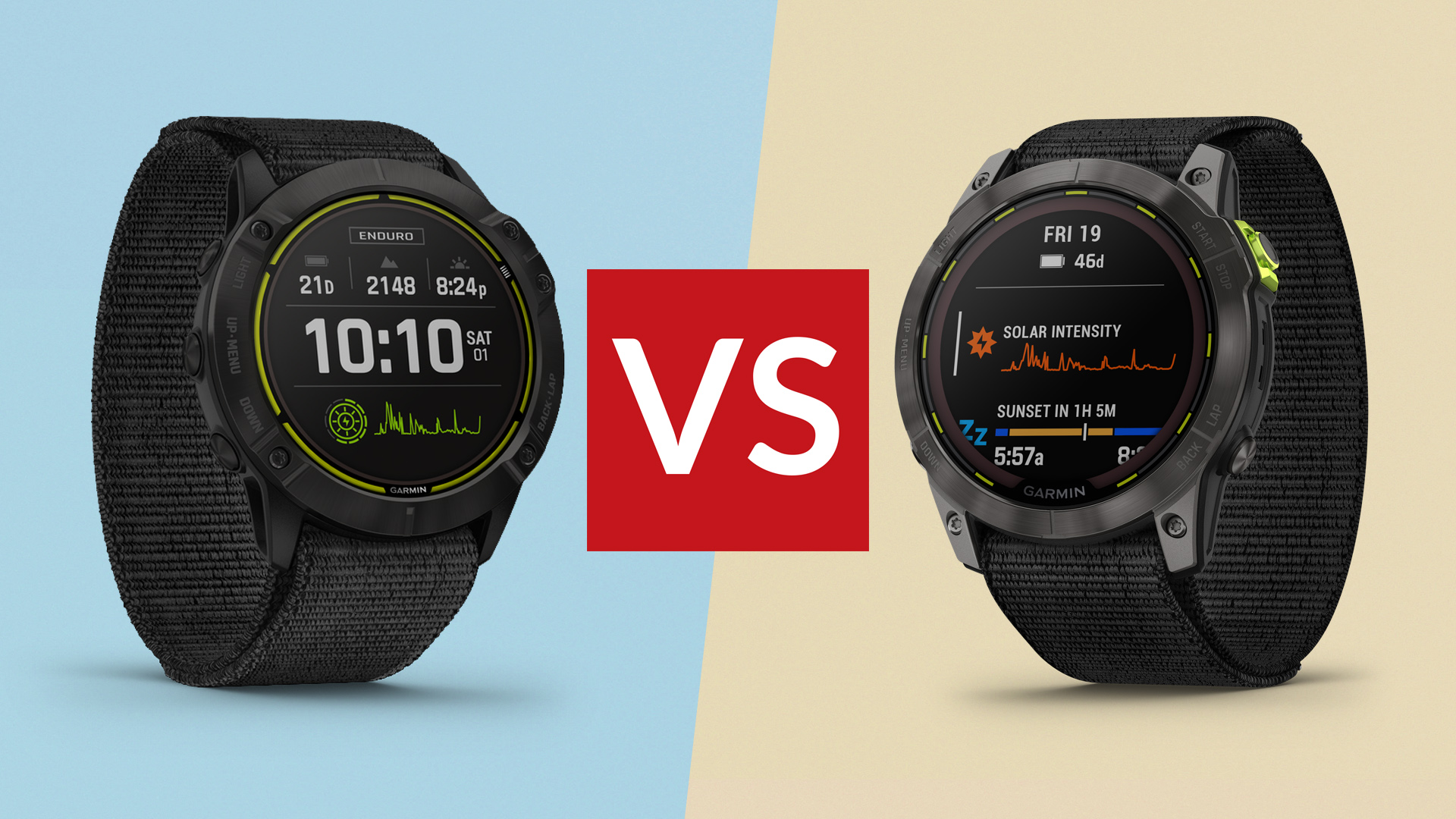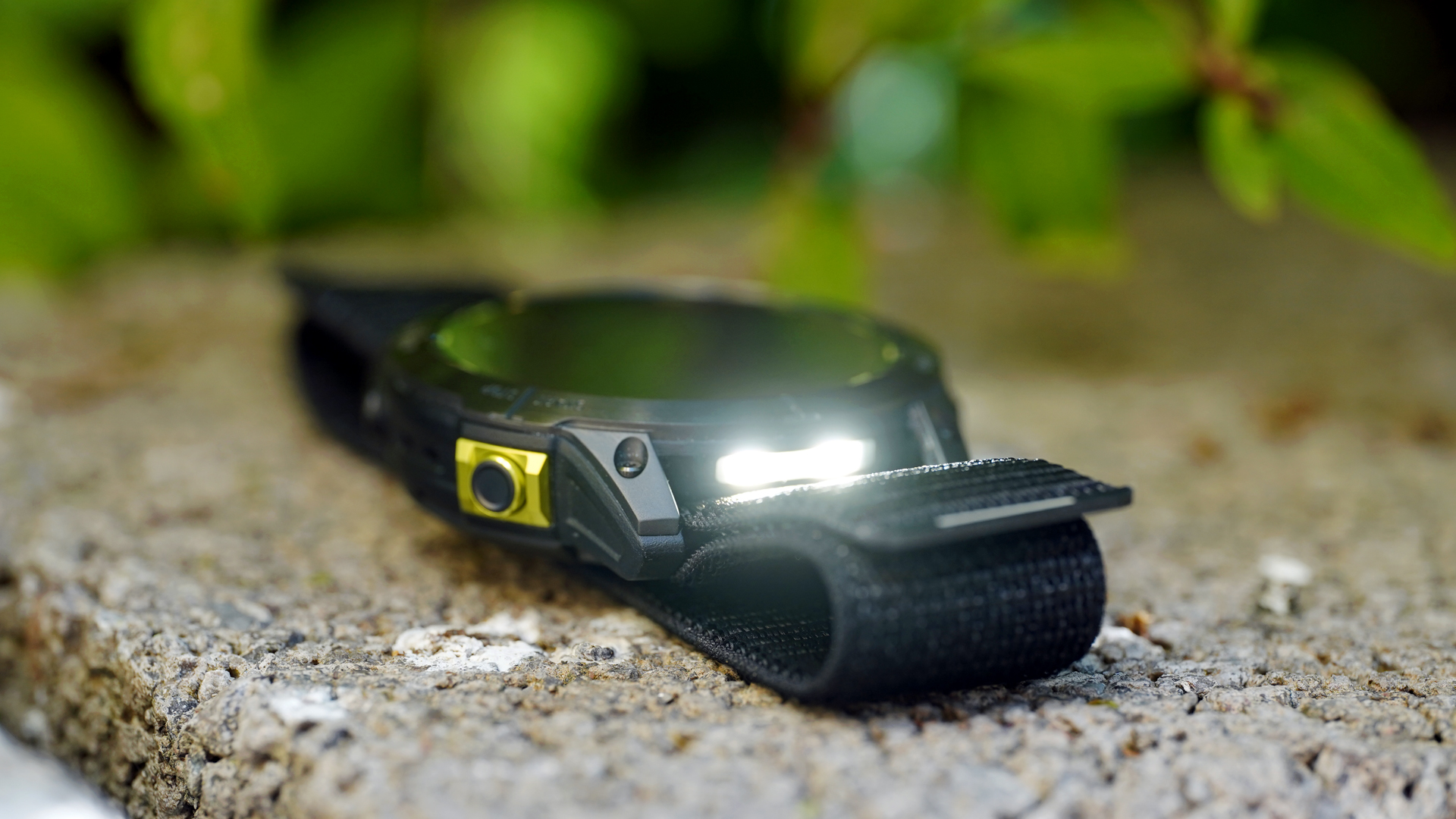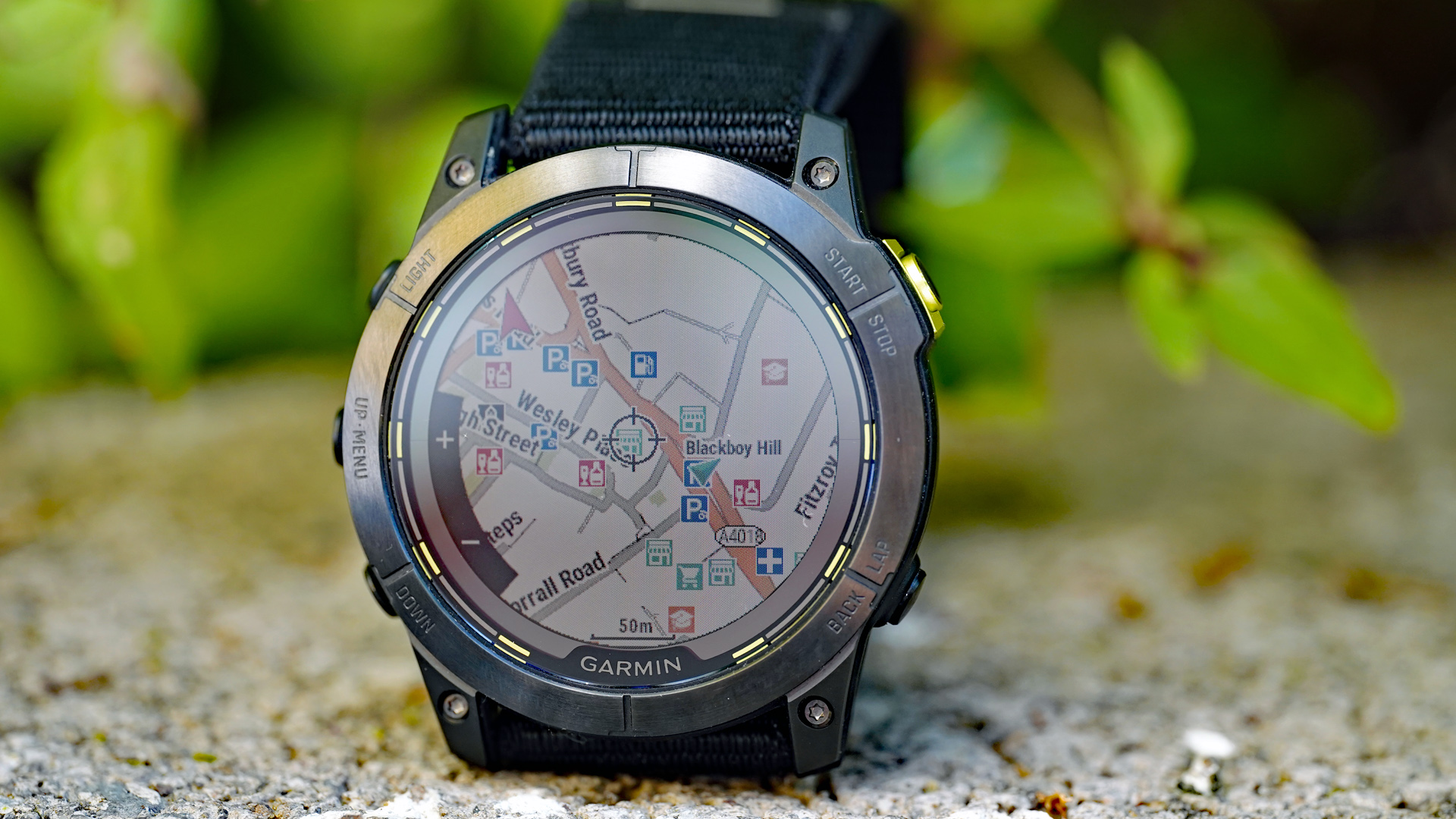Garmin Enduro vs Enduro 2 – Which ultra-marathon watch is best?
The Garmin Enduro 2 delivers even crazier battery life than its predecessor – but is it worth the hefty price tag?

Garmin Enduro vs Enduro 2: the battle of the best Garmin has to offer in the ultra-marathon watch department. Despite the very similar looks, there are some key differences between the new Garmin Enduro 2 and its predecessor, which extend beyond a longer battery life and price point.
In this Garmin Enduro vs Enduro 2 comparison, we'll look at all the design, features and performance as well as the price of these over-achieving multisport watches to help you decide if it's worth paying the premium for the newer device. Or if you already own an Enduro, you'll find out if it's really worth the upgrade.
If you're interested in performance wearables and especially Garmins, we'd recommend you check out T3's best Garmin watch, best running watch and best triathlon watch guides, the latter acts as a guide to all multisport watches available now. We also have the roundup of the best outdoor watches, in case that's of interest.
Without further ado, let the battle commence!
Garmin Enduro vs Enduro 2: Price and availability
Launched in February 2021, the Garmin Enduro is available to buy in two versions: the standard Enduro features a steel bezel and costs $799.99 in the US and £549.99 in the UK, while the more premium Carbon Grey DLC Titanium version is $899.99 / £619.99.
Released in August 2022, the second generation Enduro can be picked up for a recommended retail price of $1,099 / £929.99. All models are available to buy from Gamin’s official website and other major online retailers such as Amazon and Currys.
For the best prices, have a look at the best Garmin watch deals roundup: prices are updated every half an hour and are based on your location.
Get all the latest news, reviews, deals and buying guides on gorgeous tech, home and active products from the T3 experts
Winner: Enduro
Garmin Enduro vs Enduro 2: Design
If you place both the Enduro and Enduro 2 watches side by side, it won’t be too obvious how these watches differ. Apart from the colour finish, both devices look pretty much identical. Still, design isn’t just about appearance. The touch and feel are also important factors, and weight and thickness can change things drastically here.
When it comes to size, the Enduro 2 is slightly thicker to accommodate a bigger battery (which we’ll talk about later), coming in at 15.6mm thick, while the original Enduro measures 14.9mm thick, so it's not even a full millimetre’s difference.

"The titanium version of the first Enduro model was even lighter, coming in 61g – almost 10g lighter than the Enduro 2."
There’s a similar theme happening in the weight department, too. The Enduro 2 weighs in at 70g, which is pretty light for a smartwatch, thanks to the lightweight materials used for its construction (e.g. titanium). However, the titanium version of the first Enduro model was even lighter, coming in 61g – almost 10g lighter.
This is likely, again, down to the bigger battery, so at least there is a good reason for it. Still, 10g is pretty significant for a watch, as it’s a weight difference you’re likely to feel on the wrist. [Editor's note: all stats above are case-only]
The Enduro 2 Power Sapphire glass, meaning it not only has a solar panel built into the perimeter of the display to give it extra power when out and about, but it’s also made from a sapphire crystal, which is incredibly scratch resistant against knocks and drops.
The original The Enduro has the same solar tech but is made instead from Gorilla Glass, which isn’t as durable as sapphire but is less reflective, meaning it’s slightly easier to read in environments where there’s direct light. So whether giving up the ruggedness of sapphire for a more readable display is worth it or not will come down to personal preference.
Winner: Enduro

The Garmin Enduro 2 features a physical flashlight
Garmin Enduro vs Enduro 2: Performance and features
Both Enduro devices have the same goal: rugged outdoor fitness. However, the newer Enduro 2 has been given a few upgrades by Garmin to give it that edge over its predecessor while offering users something new. Let’s get into what these main differences are.
One of the biggest differences between the two flagship watches is the updated user interface. Not only is this a little different from the Enduro 2, but it's actually a touch interface that you can interact with by prodding with your finger and swiping around. Yes, there are buttons, and the touch interface can be disabled if you prefer to use only them, but the option is there, at least - unlike with the original Enduro, which is limited to button control only.
Another big difference between the two watches’ feature sets is maps and navigation. Enduro 2 features built-in maps in the form of TopoActive Mapping, meaning that you can navigate around without needing a tethered phone and internet connection in tow. It’s a very powerful feature and allows you to set waypoints and create turn-by-turn directions. The Enduro, however, doesn’t tout this feature. While it does have breadcrumb mapping (basically a blank map with a line demonstrating where you’ve been and want to go), it severely lacking in the navigation department.

"The Enduro 2 features built-in maps, meaning you can navigate without needing a tethered phone and internet connection in tow."
Accuracy is another area where the Enduro 2 really excels thanks to its multi-band GPS tech, which means it can access several GPS satellite systems at once, making it super accurate. The original Enduro, on the other hand, makes use of Garmin's older GPS chipset and so isn’t quite as accurate but is still pretty darn good.
Battery life is one of the most important factors when splashing out on a new smartwatch, so how does that fare between the two Enduro models?
The Enduro 2 can track up to 150 hours of GPS activity with solar enabled. By comparison, the Enduro offers just 80 hours in the same mode. While the latter should still be suitable for most people using the watch for standard activities like marathon running or regular-distance triathlons, the latest device would be better suited to those doing ultramarathons or those without access to charging points for a prolonged time between activities.
However, quite sneakily, the original Endro’s battery does outperform its successor when it comes to standby time and smartwatch modes, for example, when you’re not tracking activities - lasting up to 50 days. The Enduro 2? Just 34 days. Relatively, a month is still a very long time, so it’s not really a massive deal in the scheme of things. As before, it all comes down to preference and which watch you opt for depends on how you plan to use it.
WINNER: Enduro 2

Garmin Enduro vs Enduro 2: Verdict
The original Enduro won more rounds in our head-to-head battle.
This is mostly because it offers a very similar user experience and set of features to its successor but at a much lower price point. So, unless you’re an avid ultramarathon runner with the need for near-perfect accuracy and longer, GPS-powered battery life – or in desperate need of advanced mapping tools – you probably don’t need to invest in the latest and greatest Enduro model. Yet anyway, we're sure prices will drop eventually.
Now that you've finished here, are you interested in how the Garmin Enduro 2 fares against the equally as capable Garmin Fenix 7X? Check out our comparison here: Garmin Fenix 7X vs Enduro 2.

Lee Bell is a freelance journalist and copywriter specialising in all things technology, be it smart home innovation, fit-tech and grooming gadgets. From national newspapers to specialist-interest titles, Lee has written for some of the world’s most respected publications during his 15 years as a tech writer. Nowadays, he lives in Manchester, where - if he's not bashing at a keyboard - you'll probably find him doing yoga, building something out of wood or digging in the garden.
